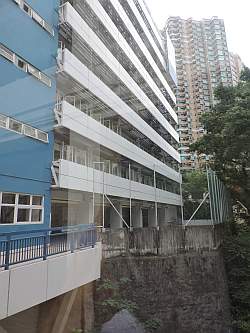
Today I visited Sokly’s work place at Chinese University, the old Canossa School for the Deaf (right), and then had dinner with deaf friends in the evening. Click here to see the pictures.
Charlie Dittmeier's Home Page

Today I visited Sokly’s work place at Chinese University, the old Canossa School for the Deaf (right), and then had dinner with deaf friends in the evening. Click here to see the pictures.

This was a day with another trip that was a new experience for Sokly—a trip to one of the outlying islands–and then I ended the day with dinner with friends from Hong Kong. Click here to see the pictures.
 Sokly and I visited quite a few places of interest in the morning and then in the afternoon went to the pastoral center on the Kowloon side for the liturgy to begin the anniversary celebration. It was a good opportunity to see again old friends–former students when I was at the deaf school. Click here to see the photos.
Sokly and I visited quite a few places of interest in the morning and then in the afternoon went to the pastoral center on the Kowloon side for the liturgy to begin the anniversary celebration. It was a good opportunity to see again old friends–former students when I was at the deaf school. Click here to see the photos.

I just returned from Hong Kong a couple hours ago (it’s 10:44 PM Tuesday night here) and there isn’t time to continue the updates today. I’ll post Saturday afternoon’s photos on Wednesday morning our time.
The picture above is from the fishing fleet tied up in the Cheung Chau harbor.
Today was an opportunity to show Keat Sokly around Hong Kong before we went to the anniversary celebration for the Catholic deaf group. Click here to see places and activities in the morning.
Click here to see pictures from Friday in Hong Kong.
The Hong Kong Catholic Pastoral Association of the Deaf is celebrating their fortieth anniversary and invited me back to be part of it. Click here to see day one of the trip.
This past weekend the pineapple vendors were out on the streets again, another change in the seasons. IMHO, fresh pineapple bought on the street like this, is one of the best tasting fruits there is.



|
Remember that charity is no substitute for justice. Charity alleviates the effects of poverty while justice seeks to eliminate the causes of poverty. ~William Sloane Coffin |

I had an unexpected trip back to the waterfront area today and encountered more preparations for the upcoming Water Festival. Click here to see what’s going on.